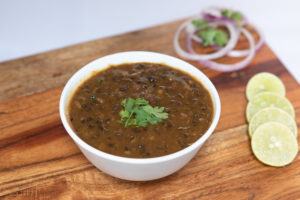 With such variety on offer, lentils provide plenty of nutrition, taste and texture to many meals. They are full of fibre, so are great for your digestion, make you feel fuller longer, and won’t cause your blood glucose to spike –what’s not to like?
With such variety on offer, lentils provide plenty of nutrition, taste and texture to many meals. They are full of fibre, so are great for your digestion, make you feel fuller longer, and won’t cause your blood glucose to spike –what’s not to like?
This complex carb has been part of the human diet for millennia and is distinguishable by its shape. The optical lens (double-convex shaped) is named after the lentil – ‘lens’ being the Latin name for lentil.
Lentils come in many different varieties and, as part of the wider legume family, they are low in fat and packed with protein, B vitamins, magnesium and antioxidants.
Lentils also include a long list of proteins, helping you feel fuller, longer, and hence often used by dieters, and complex carbohydrates, so you don’t get blood glucose spikes after eating them. In addition, as part of a normal diet, they contain 10% of your potassium needs, 18% magnesium and nearly 37% of your iron needs.
Today the lentil (Lens culinaris) is part of everyday diets in parts of the world. In the Indian subcontinent dhal, or lentil curry, is part of the daily diet, eaten with both rice and roti. And boiled lentil and lentil stock are used as a thickening agent in most vegetarian curries. But there’s plenty of other ways to enjoy this perfect little pulse.
Ways to enjoy
Most supermarkets sell a great selection of lentils – canned, dry and precooked in pouches – and you can also find them in health food shops. They’re a great, low-cost addition to your diet, particularly brown and green lentils.
These are just some of the ways to enjoy them – for dried and canned lentils, give them a good rinse several times before cooking:
Dhals: For a tasty supper for two, try this tarka dhal from BBC goodfood… Add 200g red lentils to a pan with 1-litre water and a touch of salt. Bring to the boil, reduce the heat and simmer for 25 minutes, removing the frothy top that forms, then cover and cook for another 40 minutes. Meanwhile, add a glug of vegetable oil to a frying pan and cook 1 onion and 3 cloves of garlic until softened. Add 1/4tsp turmeric and ½tsp garam masala, then cook for another minute. Put the lentils into bowls and spoon half the onion mixture on top of each. Top with a handful of chopped fresh coriander and small chopped tomato.
Stews: These dishes are a great way to use up some veg and are always lovely and filling. Simply fry an onion and garlic base, transfer to a big pot and add veggies such as celery, carrots, tomatoes, potatoes and your lentil of choice – green or brown are ideal. Cover with a good amount of stock and chilli flakes for a bit of extra flavour.
Soups: For a simple yet hearty soup, cook chopped onions, garlic, carrots and celery in a large pan, seasoning with oregano and basil. Stir in the desired portion of dry lentils, add water and tinned tomatoes. Bring to the boil and then simmer for at least 1 hour.
Salads: Pad out any of your go-to salads with a cup of cooked, cooled lentils. Add flavour with crunchy cucumber, cherry tomatoes, rocket and even some lightly fried halloumi.
Stuffed peppers: Stuff pre-baked red and yellow peppers (for extra sweetness!) with a wholesome mixed blend of seasoned lentils with fried onion, garlic and mushrooms, and top with cheese. Pop back in the oven till the cheese bubbles.
(could be a sidebar?) Lentil varieties
The most common types of lentils are brown, Puy, green, yellow and red, and beluga.
Brown: Said to be the most eaten variety, brown lentils are a great addition to stews, thanks to their earthy flavour and as they cook quickly.
Puy: These speckled, greenish-bluish-greyish orbs originate from the French region Le Puy-en-Velay. Since they are grown in this distinct place (which has volcanic soil) the taste is slightly different — it’s even more peppery and flinty. They tend to keep their shape when cooked.
Green: Similar in colour to Puy lentils but often larger, they are a good and cheaper option (Puy are top of the range). They are popular in Europe and tend to take about 45 minutes to cook – also a good choice for stews.
Yellow and red: Sweet and nutty in taste, these hulled lentils cook quickly and lend themselves well in curries and feature as the main ingredient for many dhals.
Beluga: These small black lentils are great in salads. Beluga lentils are a type of small, black lentil, which get their name from their resemblance to Beluga caviar. They are grown in the cool, dry climates of Canada and America’s northern plains and are less common than red, yellow and green lentils. black lentils such as Beluga possess anthocyanins – the same powerful antioxidant found in dark berries like blueberries and blackberries. These antioxidants are great at preventing damage to cells by free-radicals. They have a delicate taste and are fantastic at absorbing other flavours.
Nutrition
While the many varieties of lentils may vary slightly, on average, 200g of cooked lentils provides:
- Calories: 230
- Carbs: 39.9g
- Protein: 17.9g
- Fat: 0.8 grams
- Fibre: 15.6g
- Vitamin B6: 18% of the recommended daily allowance (RDA)
- Folate: 90% of the RDA
